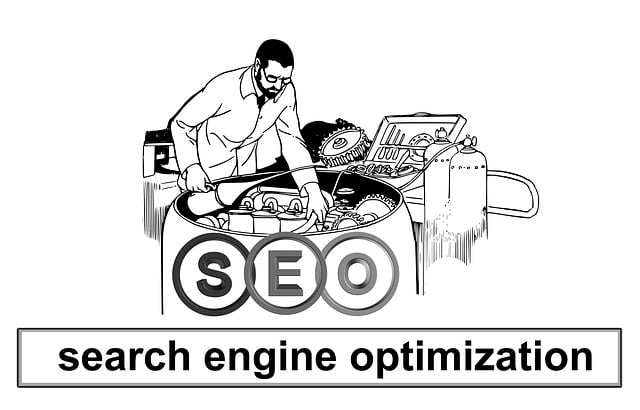SEO Basics are crucial for boosting a website's online presence. Beginners should focus on keyword research to understand user behavior, and optimize on-page elements like titles and content for search engines. Technical SEO, ensuring site accessibility and speed, is vital. Building high-quality backlinks from reputable sources enhances site authority. Content marketing, when combined with SEO, creates a feedback loop driving organic traffic growth. Regular performance analysis using tools like Google Analytics is key. Staying updated with trends and algorithm changes ensures your website keeps up with competitors. A multi-faceted approach including content creation, optimized structure, backlinking, social media engagement, and analytics monitoring is essential for long-term SEO success.
In today’s digital landscape, understanding SEO Basics is paramount for driving organic traffic and boosting online visibility. This comprehensive guide unravels essential elements of SEO Traffic Growth, catering to both seasoned marketers and beginners. From deciphering SEO Basics to mastering Keyword Research, optimizing on-page elements, building backlinks, and leveraging Content Marketing, each section equips you with actionable strategies. Learn how Technical SEO and staying abreast of algorithm updates contribute to sustained growth. Discover the key to unlocking long-term success in the ever-evolving world of search engine optimization.
Understanding SEO Basics: An Overview for Beginners

SEO, or Search Engine Optimization, forms the backbone of digital visibility and traffic growth for websites. At its core, SEO involves understanding how search engines crawl and index web content to rank pages in search results. For beginners, grasping the fundamentals is key. This includes optimizing on-page elements like titles, meta descriptions, and content itself, while also focusing on building high-quality backlinks from reputable sources.
The process begins with keyword research, identifying terms your target audience uses in searches. Incorporating these keywords naturally into your website’s structure improves its relevance to search engines. Additionally, technical SEO plays a crucial role, ensuring your site is easily accessible and navigable for both users and search engine crawlers. This involves optimizing site speed, mobile-friendliness, XML sitemaps, and robots.txt files. By implementing these SEO basics effectively, websites can attract organic traffic, enhance user experience, and increase their online visibility.
Keyword Research: The Foundation of Effective SEO

Keyword research is a crucial step in any SEO strategy and serves as the foundation for effective search engine optimization. It involves understanding your target audience and identifying the terms they use to search for products, services, or information related to your niche. By conducting thorough keyword research, you can uncover valuable insights into user behavior and preferences. This process helps you select the most relevant keywords that align with your business goals and have the potential to drive targeted traffic to your website.
At its core, SEO basics emphasize the importance of matching your content with user search intent. Keyword research enables content creators and marketers to craft compelling and optimized content that addresses specific queries. It ensures that your website appears in relevant search results, increasing its visibility and attracting the right audience. Effective keyword strategies can significantly boost organic traffic growth over time.
Optimizing On-Page Elements for Better Rankings

Optimizing on-page elements is a fundamental aspect of SEO basics and plays a pivotal role in enhancing your website’s visibility and driving organic traffic growth. When search engines crawl a webpage, they analyze various factors to determine its relevance and quality, ultimately ranking it higher or lower in search results. One of the key components is optimizing titles, headings, and meta descriptions to include relevant keywords naturally. These on-page elements serve as crucial cues for both search engine algorithms and users, signaling the topic and value of your content.
Additionally, crafting compelling and informative content that satisfies user intent is essential. Search engines prioritize delivering results that meet the needs of their users, so ensuring your content provides valuable information relevant to your target keywords can significantly impact your rankings. Effective on-page optimization involves a strategic blend of technical precision and creative writing, allowing your website to stand out in the competitive digital landscape.
Building High-Quality Backlinks: Strategies and Tips

Building high-quality backlinks is a cornerstone of SEO basics, playing a pivotal role in boosting your site’s authority and visibility. To establish a robust backlink profile, focus on strategies that align with ethical SEO practices. One effective approach is to create content that naturally attracts links from reputable sources. This could involve conducting thorough research to identify industry-relevant blogs, websites, or influencers, and then offering valuable insights, unique data, or in-depth analyses that address their audience’s needs. By contributing high-quality, shareable content, you increase the likelihood of earning organic backlinks.
Additionally, leveraging guest blogging opportunities on authoritative platforms can significantly enhance your backlink profile. When writing for other sites, ensure your content is not only engaging but also optimizes for relevant keywords to attract natural links. Building relationships with industry peers and influencers can also facilitate link-building efforts. These connections might lead to mutual promotion, co-creation of valuable resources, or even partnership opportunities, all of which contribute to a diverse and healthy backlink portfolio—a key component in mastering SEO basics for sustainable traffic growth.
Technical SEO: Ensuring Your Website is Search Engine Friendly

Technical SEO is a crucial aspect of optimizing your website for search engines, forming a fundamental part of SEO basics. It involves ensuring your site’s structure and underlying code are search engine-friendly. This includes making sure your website has a clear hierarchy, easy navigation, and fast loading times. Search engines like Google rely on these technical elements to understand and index your content effectively. By implementing best practices in Technical SEO, you enable search engines to crawl and process your site efficiently, leading to better visibility and increased organic traffic.
A well-optimized website ensures that web crawlers can access all pages easily, retrieve important data, and understand the context of your content. This involves optimizing HTML tags, improving internal linking structures, implementing structured data markup, and ensuring mobile responsiveness. These practices not only enhance the user experience but also signal to search engines that your site is a valuable resource worth ranking higher in search results.
Content Marketing and SEO: A Synergistic Relationship

Content marketing and SEO are two powerful tools that work in harmony to drive organic traffic growth, forming a synergistic relationship within the broader framework of SEO basics. Content marketing involves creating valuable, relevant, and consistent content tailored to attract and engage a specific audience. This strategy focuses on building trust and establishing authority by providing answers to user queries before they even search for them. By delivering high-quality content, brands can rank higher in search engine results pages (SERPs) over time.
SEO, as the cornerstone of digital visibility, enhances the discoverability of this content. By optimizing content with relevant keywords, meta tags, and structured data, search engines can better understand its context and intent. This leads to improved indexing and increased chances of appearing in relevant searches, thereby driving targeted traffic. When content marketing is aligned with SEO best practices, it creates a virtuous cycle where each strategy amplifies the other, ultimately leading to sustained growth and enhanced online presence.
Measuring and Analyzing SEO Performance

Measuring and analyzing SEO performance is a crucial part of understanding how well your optimization strategies are working. It involves keeping a close eye on key metrics that indicate the visibility and traffic generated through search engines. By utilizing SEO basics like tracking rankings, analyzing keyword performance, and monitoring organic traffic, you gain valuable insights into user behavior and search trends. These insights empower you to refine your content strategy, improve website structure, and enhance overall user experience.
Effective measurement requires leveraging powerful analytics tools that provide data-driven perspectives on SEO efforts. Google Analytics, for instance, offers comprehensive reports on page views, bounce rates, average session duration, and source of traffic, among other metrics. Integrating this data with keyword research tools allows for a holistic understanding of which strategies are driving relevant traffic and which areas need improvement.
Staying Updated with SEO Trends and Algorithms

In the ever-evolving digital landscape, staying current with SEO trends and algorithms is paramount for sustained traffic growth. Understanding the fundamentals of SEO basics is crucial, as it enables content creators and marketers to optimize their strategies effectively. Keeping pace with Google’s updates, such as Core Web Vitals and E-A-T (Expertise, Authoritativeness, Trustworthiness), ensures your website remains competitive in search engine rankings.
Regularly reviewing industry news, engaging with SEO communities, and analyzing competitor strategies are effective ways to stay informed. By incorporating these insights into content creation, meta tag optimization, and link building, you can enhance your site’s visibility and attract organic traffic. Remember that SEO is a dynamic field, where staying ahead of the curve can significantly impact your online success.
Strategies for Sustaining Long-Term SEO Traffic Growth

To achieve and sustain long-term SEO traffic growth, understanding SEO basics is paramount. It involves a holistic approach that includes regular content creation tailored to target keywords. By consistently delivering valuable, keyword-rich content, websites can improve their search engine rankings over time, driving more organic traffic. Additionally, optimizing website structure, user experience, and mobile responsiveness enhances the overall health of a site’s SEO, encouraging both search engines and visitors to stay longer.
Leveraging backlinking strategies, where relevant, high-quality sites link to yours, boosts authority and visibility. Social media engagement and influencer partnerships can also indirectly contribute to SEO by increasing brand awareness and driving referral traffic. Continuous monitoring of analytics data is crucial for identifying trends, understanding audience behavior, and making data-driven adjustments to SEO strategies, ensuring sustained growth in the competitive digital landscape.
